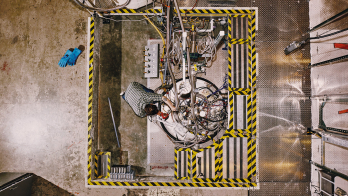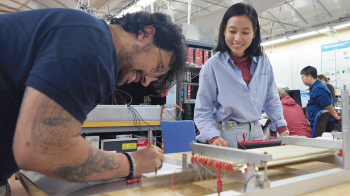The final crystals for the CMS electromagnetic calorimeter (ECAL) arrived from China and Russia at CERN in March, completing a mammoth production process nearly 10 years after the delivery of the first production crystal in September 1998. These final crystals will be used to complete the endcaps of the ECAL, which contains more than 75,000 crystals.
The huge quantity of leadtungstate crystals used in the ECAL in CMS is the largest number produced for a single experiment. The superb quality of the crystals, in terms of both their optical properties and their radiation resistance, is the result of intense work and collaboration between the producers and ECAL groups, as well as the network of crystallography and solid-state physics experts from the Crystal Clear collaboration.

Five CMS institutes – CERN; the Italian National Agency for New Technologies, Energy and the Environment; the Swiss Federal Institute for Technology Zurich; the Institute for Nuclear Problems Minsk and Rome University I – have been prominent in monitoring and overseeing quality control of this long production process. The optical properties of each crystal were measured by custom-designed automatic equipment. Radiation resistance was systematically controlled through test sampling and required complex logistics coordinated by CERN and ETHZ for the Russian and Chinese crystals respectively. Many other institutes were also involved in their early development.
The 61,200 crystals of the ECAL barrel were successfully installed inside CMS last year and the final phase will be the installation of the endcaps, which contain 14,648 crystals. The first endcap is due to be lowered into the cavern in June and the second endcap should follow later in the summer. More than 90% of the endcap crystals have already been qualified and equipped with their photo-sensors.








